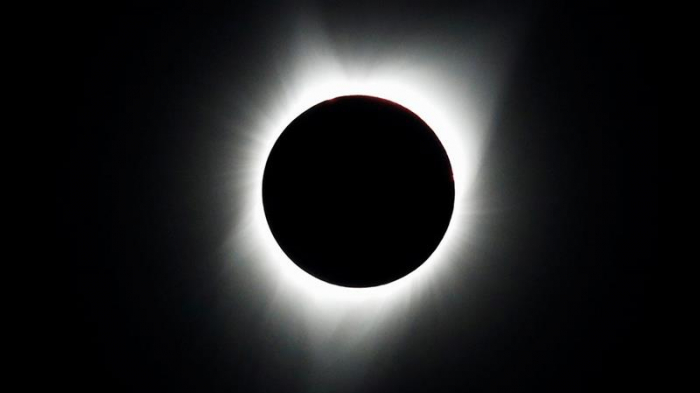Thousands of tourists from all over the world are flocking to Chile and Argentina, where the eclipse is expected to pass by in the afternoon.
It will be the first total solar eclipse since August 2017, when the moon passed between the earth and the sun over parts of the United States.
Here's what you need to know about this year's total eclipse:
1. What is a solar eclipse?
A solar eclipse occurs when the moon passes between the sun and earth and blocks the sun. During a total eclipse, the sun's crown, or corona, is visible to the naked eye.
The crown is the sun's outer atmosphere, stretching millions of miles into space.
There are four types of solar eclipses: partial, annular, total and hybrid.
According to NASA, a total eclipse occurs somewhere on earth about every year and a half. Partial eclipses are expected at least twice a year.
2. When and where will the 2019 total solar eclipse pass by?
Unlike the 2017 eclipse, the moon's umbral shadow this time will be visible only from Chile, Argentina and an uninhabited South Pacific island.
A partial eclipse may be seen in other parts of South America, including Bolivia, Peru and Ecuador.
The total eclipse is expected to last up to four minutes, depending on the location, according to NASA.
NASA said that totality is expected to begin around 4:38pm local time (20:38 GMT) in La Serena, Chile, and end there around 4:40pm (20:20 GMT).
In Junin, Argentina, totality is expected to begin around 5:42pm local time (20:42 GMT) and end at 5:44pm (20:44 GMT).
Several websites, including NASA, will be live-streaming the eclipse so people can watch from all over the world.
3. Is it safe to look at a solar eclipse?
During totality, it is safe to view a solar eclipse.
However, as the moon reveals the sun, NASA said, people may be caught off guard, exposing their eyes to possible damage from the sun's UV rays.
NASA advises individuals watching the eclipse to use protective glasses or indirect viewing devices during all the phases.
4. When was the last total eclipse?
Millions of people in the US were able to witness the last total solar eclipse on August 21, 2017.
Everyone in North America at the time was able to view at least a partial eclipse, with totality crossing 14 states. A partial eclipse was also viewable from parts of South America, Europe and West Africa.
Prior to the 2017 event, a solar eclipse had not been visible across the entire US since 1918.
5. Solar eclipse 2020
After this year's event, the next total solar eclipse will be visible on December 14, 2020, over parts of South America, according to NASA.
More about: solar-eclipse moon earth
















































